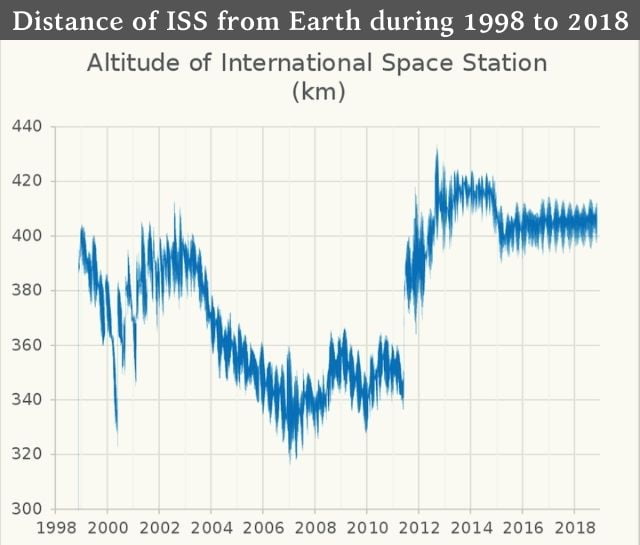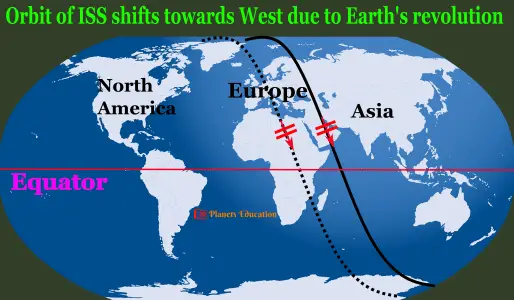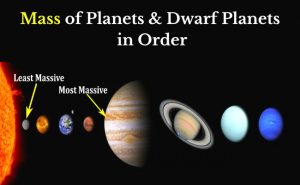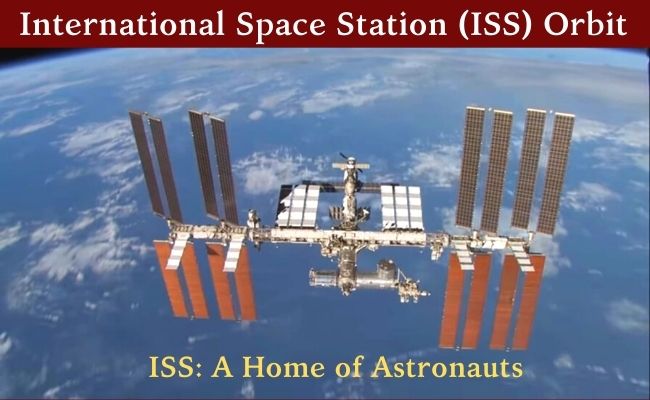International Space Station (ISS) is a large spacecraft that orbits around the Earth. ISS is like a home for a crew of astronauts where they can stay.
The international space station is a collaborative project among 5 space agencies: NASA (United States), Roscosmos (Russia), JAXA (Japan), ESA (Europe), and CSA (Canada). Although 263 people from 20 different countries have visited this space station till the end of October 2022. NASA usually sends astronauts and cosmonauts to the space station to learn more about living and working in space.
| “ISS – A Home for Astronauts”. |
So you may be wondering about where ISS is located or what is the orbit of the international space station.
International Space Station Orbit
Do you know, how high is the orbit of the ISS, or what is ISS distance from earth? Well… it is not quite far from us. Some of the interesting facts about the orbit of the international space station are given below:-
“The international space station orbits the earth at an average distance of approximately 248 miles (400 kilometers)”.
- Whereas the minimum possible ISS approximate distance is 330 km (205 mi) and a maximum of 410 km (255 mi) from the earth’s surface. Thus it does not have a fixed orbital height.

- The international space station orbits in a nearly circular path in the center of the thermosphere of the earth’s atmospheric layer. With an orbital inclination of 51.6° to the earth’s equator, ISS revolves around our earth.
- It travels at an average speed of 27,600 kilometers per hour (17,150 mph). Whereas ISS completes 15.54 orbits per day, it takes approximately 92 minutes to complete one orbit around the earth.
- The ISS has an orbital decay of almost 2 kilometers per month. So maintaining its orbit takes approximately 7.5 tonnes of chemical fuels that cost around $210 million. This is called the orbital boosting of the space station.
Why ISS is 400 km above the earth’s surface?
So here is an interesting question, why the space station is just around 400 km above the earth’s surface? Could it be lower or higher than this specific point? And what if they change the orbital height of ISS?
You know there are a lot of possible advantages of this orbit. According to a memorandum between NASA and Russian Space Agency Roscosmos:
“This height for ISS, will enable its user to take advantage of human ingenuity in connection with its low gravity environment, the near-perfect vacuum of space and vantage point for observing the earth and the rest of the universe.”
There were mainly three main factors that scientists considered before placing the ISS in orbit:
- Atmospheric and gravity drag
- Protection of astronauts
- Reduction in cost
Atmospheric and gravity drag
The pressure of the earth’s atmosphere decreases with height. If we place an object very close to the earth’s atmosphere where the pressure is high, it may burn up due to high friction with gas molecules.
Below 300 km the atmospheric gas molecules are quite enough to make a significant drag on any large object. And atmospheric drag will slowly lower the orbit and finally, the object will fall on earth due to earth’s gravity.
Even at 400 km, there is little atmospheric drag that causes ISS to decay at an altitude of around 2 km/month. And thus to maintain its altitude orbital boosting is done by space agencies several times a year.
So this is not significant to place an object below 300 kilometers to the earth’s surface because it can cause an atmospheric and gravity drag.
Protection of astronauts
You maybe know it, the magnetosphere of the earth protects the earth’s creatures from the sun and cosmic radiation.
Above 700 km from the earth’s surface, the Van Allen Radiation Belt of the magnetic field exists that possess energetic charged particles. Staying in this harmful radiation region for a long time can cause many health issues for the human body.
Under 700 kilometers the earth’s environment is shielded and is safe for human astronauts. So while considering the protection for astronauts, placing the international space station above 700 km is dangerous.
Reduction in cost
Before going on any project cost must be considered, especially when we talk about rocket science. To place a spacecraft at a higher orbit would need more fuels and rockets.
Also, it would take re-boosting and maintenance costs according to its height. Thus placing above 400 km can increase the cost proportionally.
So, considering these three main factors (atmospheric and gravity drag, astronauts safety, and reduction in cost) NASA and other contributor space agencies decided to place ISS between 330 to 410 km. So the orbit of the international space station has an average height of 400 km.
International Space Station Orbit Path
ISS was launched in November 1998 and after adding more modules it became ready for the first crew of astronauts on 2 November 2000. Since then the space station is continuously occupied by humans for more than 20 years.
So, you may have questions like, how it orbits around the earth or what is the actual orbital path of ISS.
The ISS does not revolve around the earth in an exact circular path that’s why its height and time to complete one orbit vary.
ISS orbits from west to east with an average speed of approximately 7.66 km/sec. Its orbit is inclined 51.6° with the earth’s equator (the equator is an imaginary line around the middle of the earth).
So what is the orbital path ISS makes during its journey?

Suppose the current location of ISS is somewhere on Europe to Asia side. When it will come back after completing one orbit (in 92 minutes) around the earth it will shift somewhere from Europe to the North-America side. This happens because our earth continues revolving around its axis from west to east (counterclockwise).
In one day (24 hours) it shifts 16 times. And some part of the 16th orbital path overlaps the 1st location.
Mathematically, there are 1440 minutes in one day and ISS changes 16 locations each is approximate 92 minutes. So (16 × 92 = 1472 minutes) and that’s how some part of it overlaps at the 16th shift.
As it overlaps after the 16th orbit but it does not get the same location. Though after 3 days ISS repeats orbit track over the approximate same area on the ground.
So that’s how the international space station orbits the earth. Astronauts or cosmonauts usually visit on ISS and till now 251 people have been visited from 20 different nations. The ISS orbits Earth at around 400 kilometers in height. And in this article, you have got to know the reason for the height of the International Space Station Orbit.
Here in this article, you have got to know some interesting facts and information about ISS with an explanation of its orbital path. Hope you have liked reading it, you may check some other educational posts below:
Check Related Articles:-
- Revolution of Planets Around the Sun
- Interesting facts about the Earth
- What is Gravity and Gravitational Force
- 5 Best Solar System Backpacks in 2025

- Mass of Planets in Order from Lightest to Heaviest

- Star Projector {2025}: Star Night Light Projector

